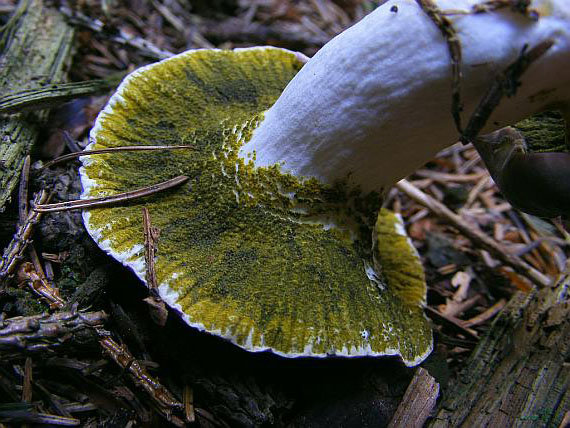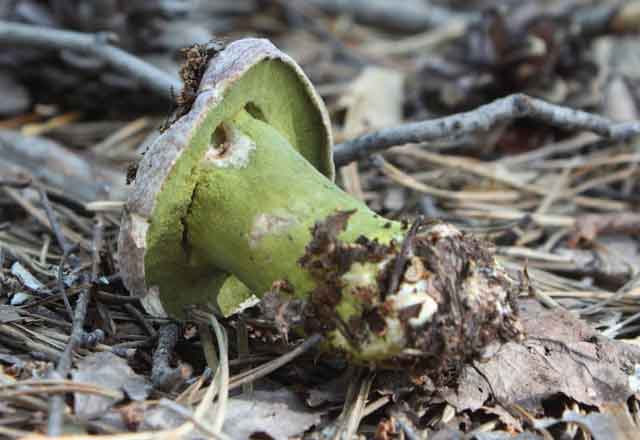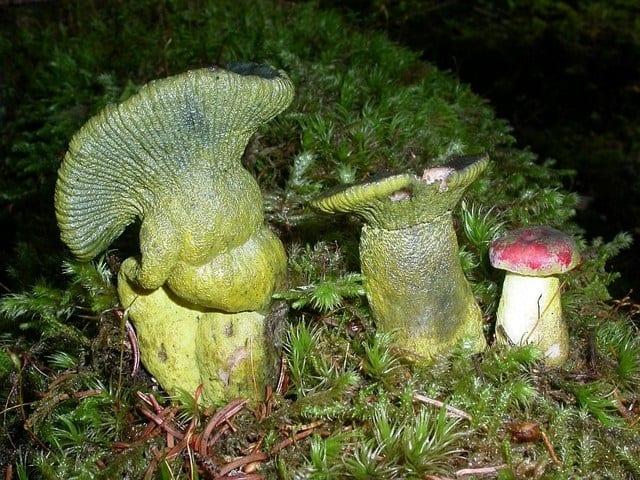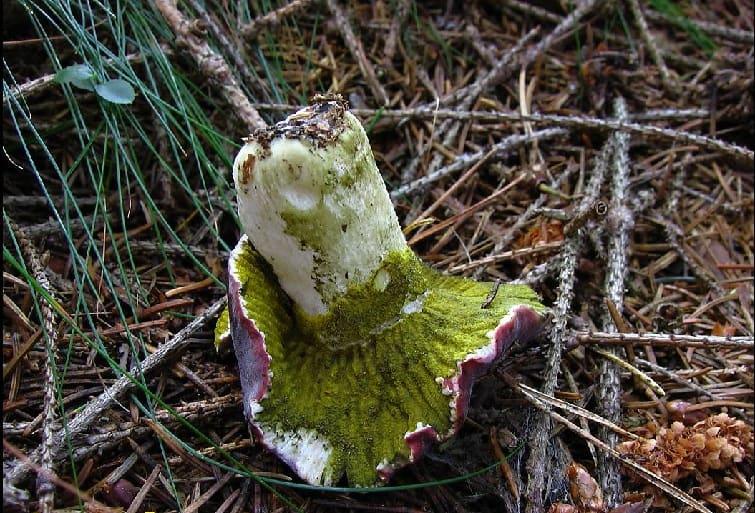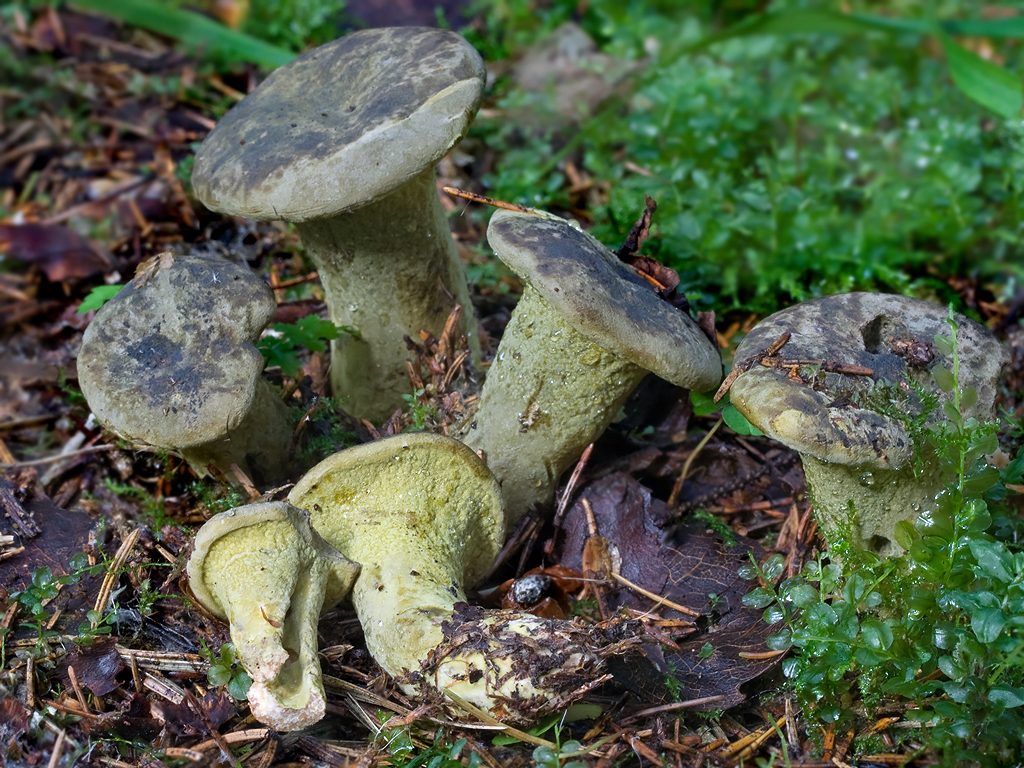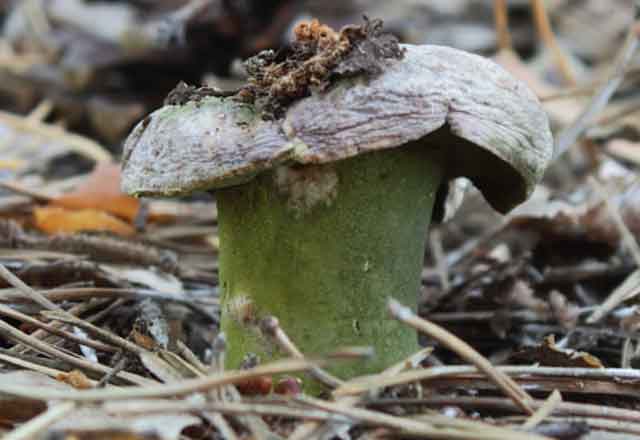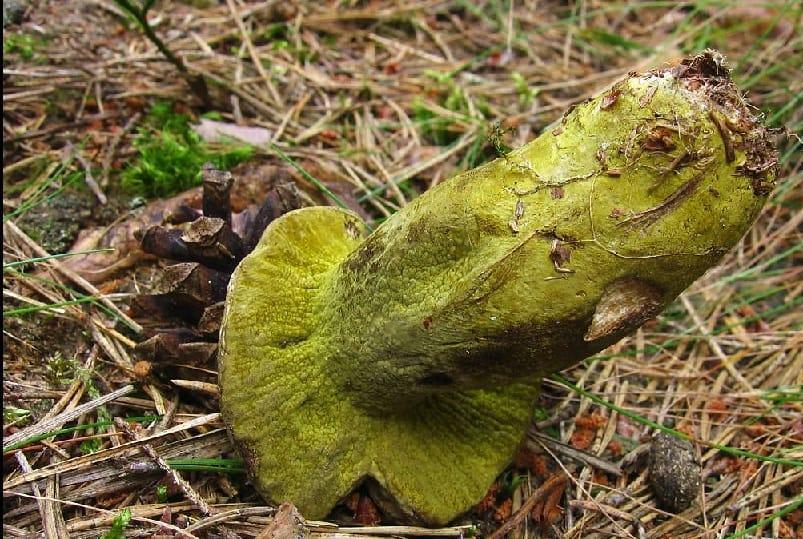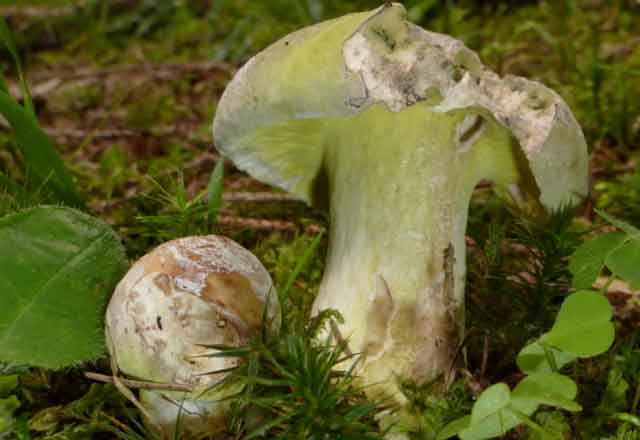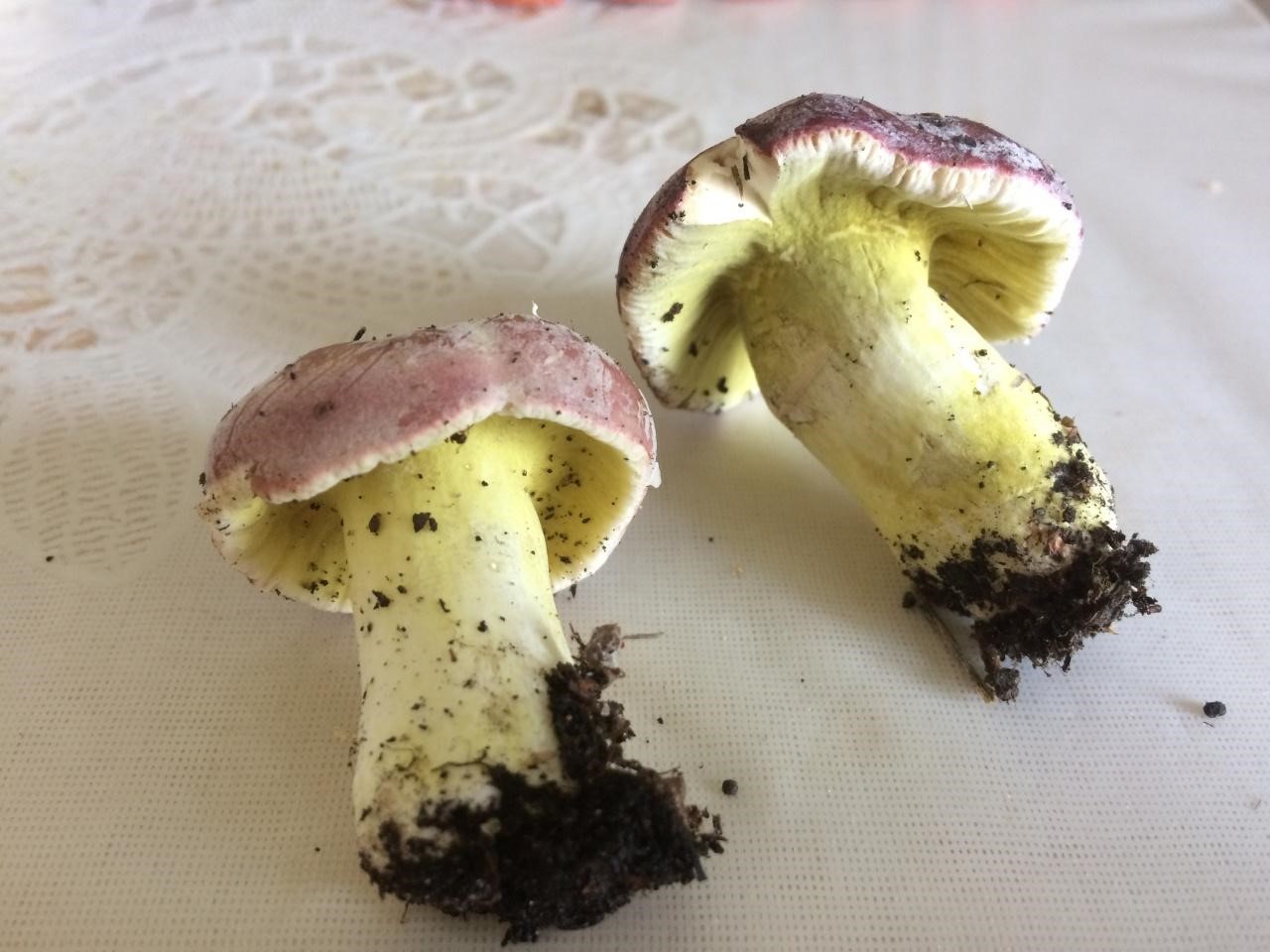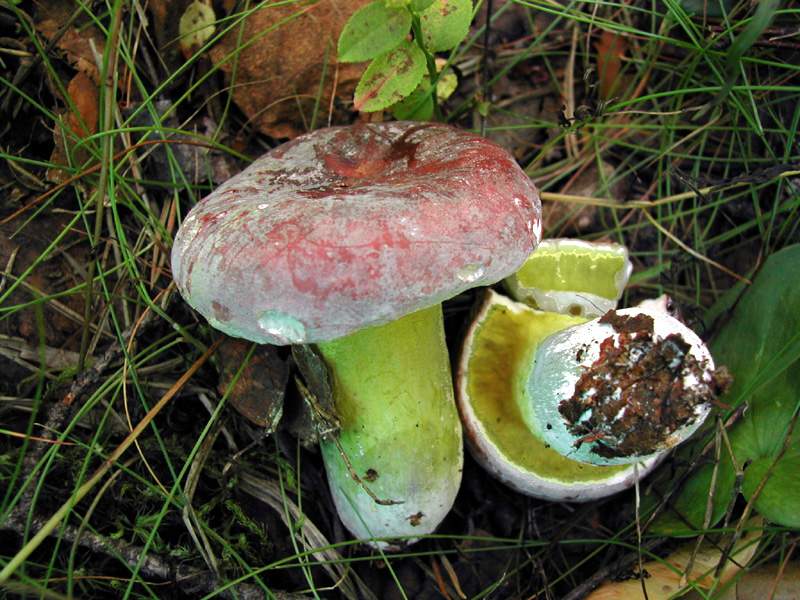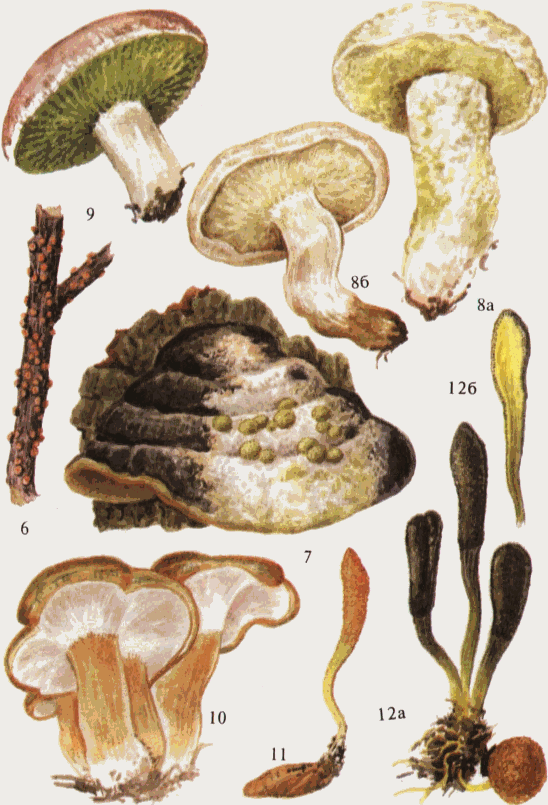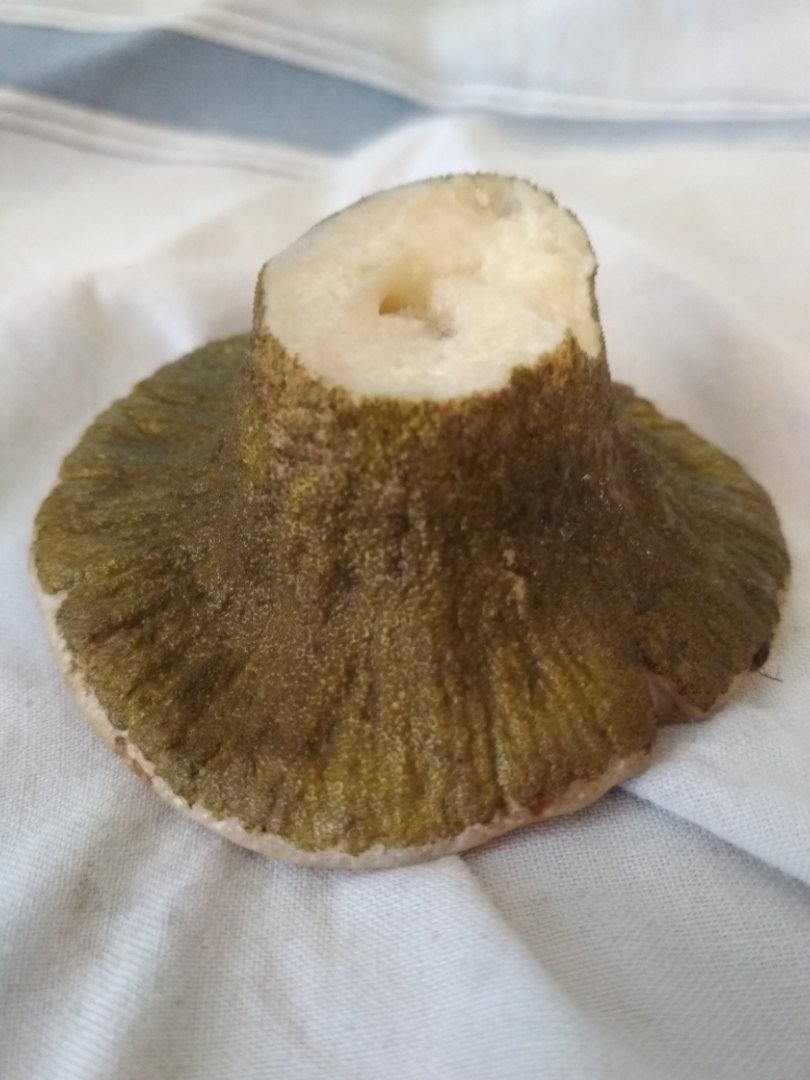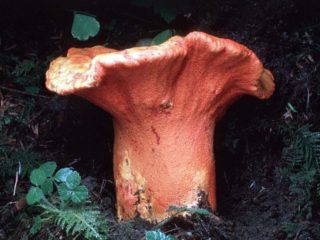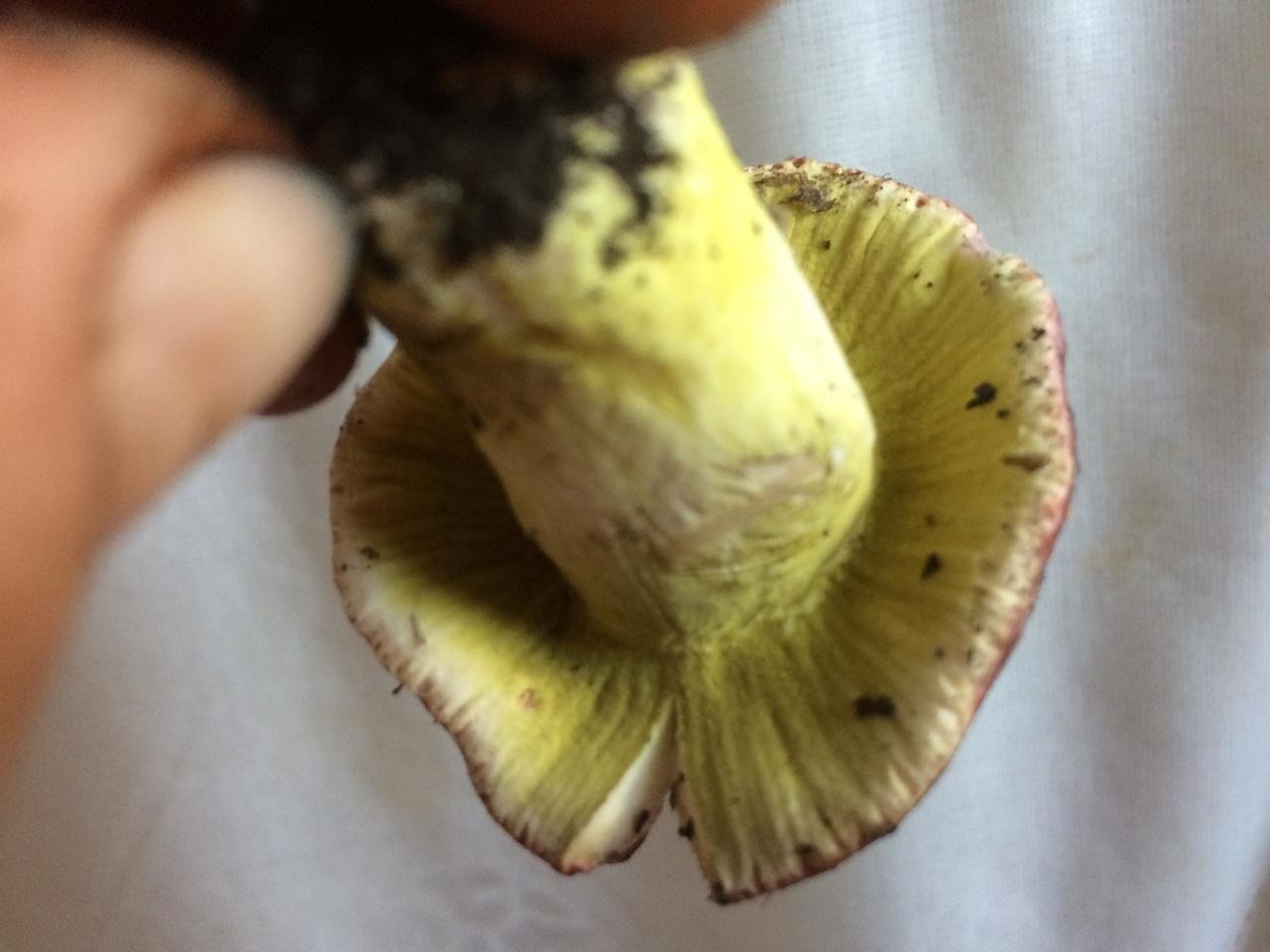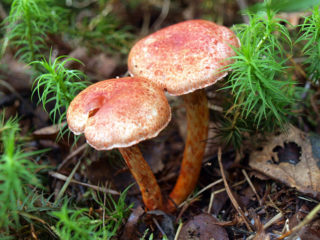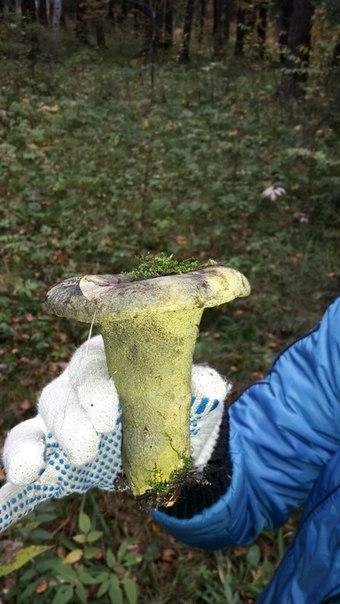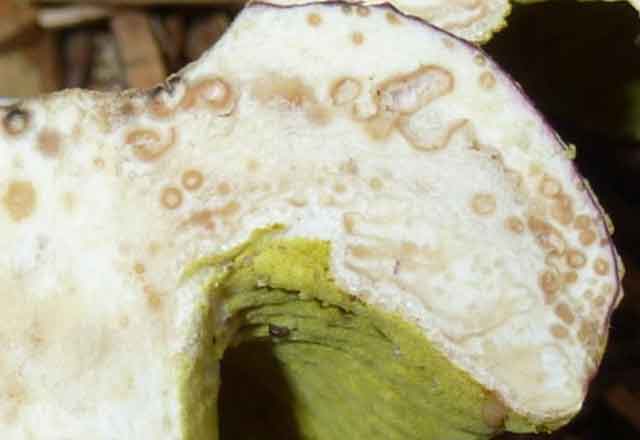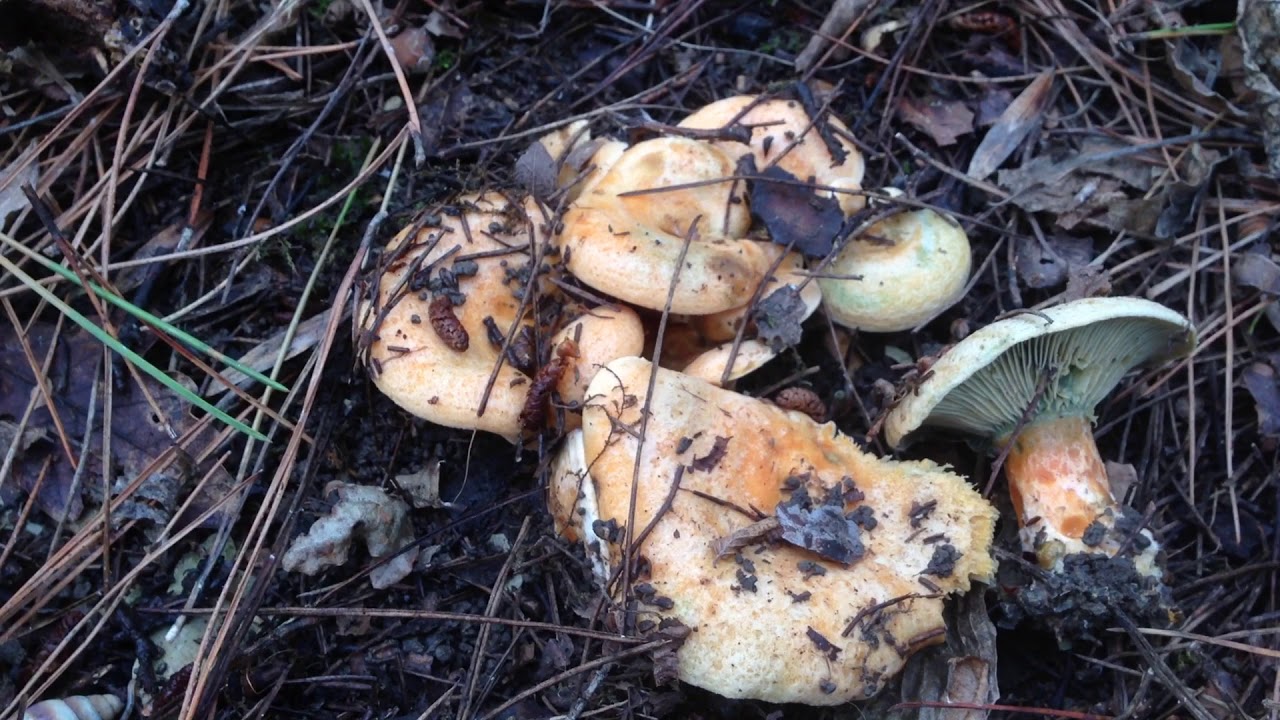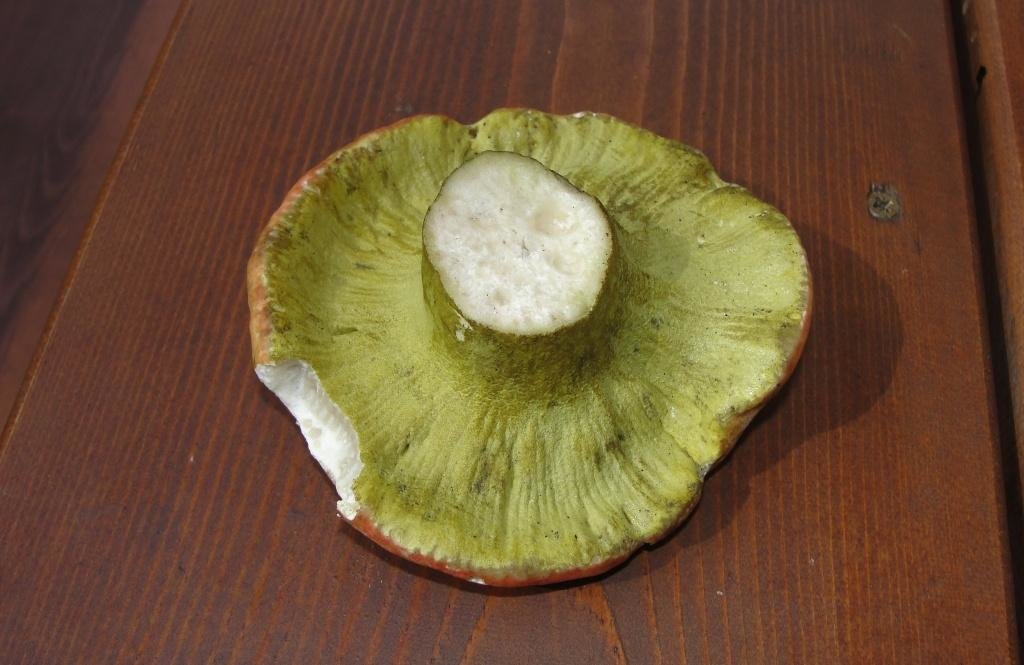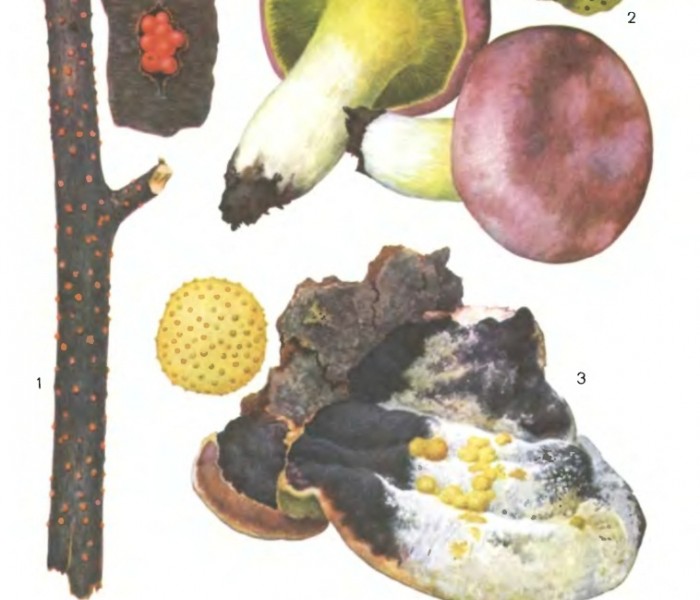Other Species
- Hypomyces agaricola
- Hypomyces albidus
- Hypomyces albus
- Hypomyces amaurodermatis
- Hypomyces apiculatus
- Hypomyces apiosporus
- Hypomyces arachnoideus
- Hypomyces arecae
- Hypomyces arenaceus
- Hypomyces armeniacus
- Hypomyces asclepiadis
- Hypomyces ater
- Hypomyces aurantiicolor
- Hypomyces aurantius
- Hypomyces auriculariicola
- Hypomyces australbidus
- Hypomyces australiensis
- Hypomyces australis
- Hypomyces badius
- Hypomyces banningiae
- Hypomyces batavus
- Hypomyces biasolettianus
- Hypomyces boleticola
- Hypomyces boletinus
- Hypomyces boletiphagus
- Hypomyces bombacinus
- Hypomyces bresadolae
- Hypomyces bresadolanus
- Hypomyces camphorati
- Hypomyces caulicola
- Hypomyces cervinigenus
- Hypomyces cervinus
- Hypomyces cesatii
- Hypomyces chlorinigenus
- Hypomyces chlorinus
- Hypomyces chromaticus
- Hypomyces chrysospermus
- Hypomyces completus
- Hypomyces conviva
- Hypomyces corticiicola
- Hypomyces dactylarioides
- Hypomyces deformans
- Hypomyces destruens-equi
- Hypomyces ekmanii
- Hypomyces epimyces
- Hypomyces favoli
- Hypomyces flavescens
- Hypomyces flavolanatus
- Hypomyces floccosus
- Hypomyces fulgens
- Hypomyces fusisporus
- Hypomyces galericola
- Hypomyces goroshankianus
- Hypomyces hrubyanus
- Hypomyces hyacinthi
- Hypomyces hyalinus
- Hypomyces inaequalis
- Hypomyces insignis
- Hypomyces javanicus
- Hypomyces khaoyaiensis
- Hypomyces lactifluorum
- Hypomyces laeticolor
- Hypomyces lateritius
- Hypomyces leotiarum
- Hypomyces leotiicola
- Hypomyces linearis
- Hypomyces linkii
- Hypomyces lithuanicus
- Hypomyces macrosporus
- Hypomyces melanocarpus
- Hypomyces melanochlorus
- Hypomyces melanostigma
- Hypomyces microspermus
- Hypomyces miliarius
- Hypomyces mycogones
- Hypomyces mycophilus
- Hypomyces niveus
- Hypomyces novae-zelandiae
- Hypomyces ochraceus
- Hypomyces odoratus
- Hypomyces orthosporus
- Hypomyces paeonius
- Hypomyces pallidus
- Hypomyces pannosus
- Hypomyces papulasporae
- Hypomyces papyraceus
- Hypomyces parvisporus
- Hypomyces parvus
- Hypomyces penicillatus
- Hypomyces pergamenus
- Hypomyces perniciosus
- Hypomyces petchii
- Hypomyces pezizae
- Hypomyces polyporinus
- Hypomyces porphyreus
- Hypomyces pseudocorticiicola
- Hypomyces pseudopolyporinus
- Hypomyces psiloti
- Hypomyces puertoricensis
- Hypomyces purpureus
- Hypomyces robledoi
- Hypomyces rosellus
- Hypomyces rostratus
- Hypomyces rubi
- Hypomyces semitranslucens
- Hypomyces sepulchralis
- Hypomyces sepultariae
- Hypomyces siamensis
- Hypomyces sibirinae
- Hypomyces spadiceus
- Hypomyces stephanomatis
- Hypomyces stereicola
- Hypomyces stuhlmannii
- Hypomyces subaurantius
- Hypomyces subiculosus
- Hypomyces succineus
- Hypomyces sulphureus
- Hypomyces sympodiophorus
- Hypomyces tegillum
- Hypomyces terrestris
- Hypomyces thailandicus
- Hypomyces thiryanus
- Hypomyces tomentosus
- Hypomyces torminosus
- Hypomyces transformans
- Hypomyces trichoderma
- Hypomyces triseptatus
- Hypomyces tubericola
- Hypomyces tuberosus
- Hypomyces tulasneanus
- Hypomyces vanbruntianus
- Hypomyces vandae
- Hypomyces villosus
- Hypomyces viridigriseus
- Hypomyces viridis
- Hypomyces volemi
- Hypomyces vuilleminianus
- Hypomyces xyloboli
- Hypomyces xylophilus
Ecology and shape
All Hypomyces species live by infesting other fungi. The hypomyce fungi itself is not very conspicuous, and generally presents as a scab of only 1 mm in diameter and height. In many cases, this fruiting body grows on the fruiting body of another fungus that has become the host, and changes the form and color of the host to something different from the original.
The individual fungi bodies are finely grained, and many of them exhibit long, narrow ellipsoids under magnification. Their diameter and height are usually about 1 to 2 mm. In general, hyphae are spread on the surface of a host fruit body and buried in the mycelium to form a large number of fruiting bodies. These can be yellow, white, olive, tan, pink or red, and present within the host or in the hypha mat.
Within the individual Ascomycete fungi, spore sacs known as asci are formed. Asci have an elongated cylindrical shape, and has a dome-shaped structure called a “cap” at the tip. Ascospores are formed, then ejected from the tip of the fruit body to the outside world.
Spores generally have a slightly angular ellipsoid shape, and in many species they are separated by a single partition, usually exhibiting a colorless to pale yellow color, and the cell walls are thick with warts or humps on the surface.
Cooking recipes
From this type, you can cook many delicious, unusual dishes and diversify your diet.
Cleaning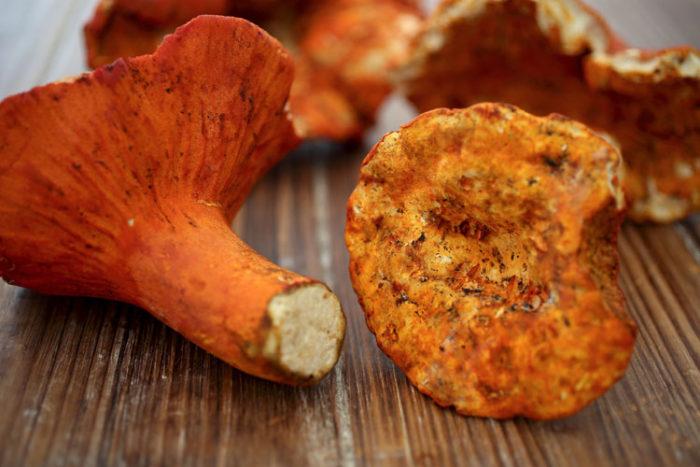
How to clean lobsters properly:
- Rinse them under running water.
- Pry the skin with a knife and remove it.
- Remove traces of decay.
- Rinse well again, dry.
Cooking
Boil the peeled mushrooms in salted water for 20-25 minutes. It is always recommended to do this before any culinary treatment.
Pickling
Ingredients:
- 2 kg of mushrooms;
- 1 liter of water;
- 60 ml vinegar;
- 2 tbsp. l. salt;
- 1.5 tbsp. l. Sahara;
- 1 tsp black peppercorns;
- 2-3 pcs. carnations.
Step by step cooking
- Sterilize the jars.
- Boil the mushrooms over medium heat until they settle to the bottom.
- Pour the broth into another saucepan using a colander.
- Rinse the lobsters with cold or cool water.
- Add the broth with salt, sugar, pepper and cloves, boil.
- Add mushrooms to the marinade and cook for 7 minutes.
- Cook with vinegar for another 5 minutes.
- Fill the jars with mushrooms boiled in the marinade.
- Cover with boiling brine.
- Roll up the cans with metal lids.
Freezing
Large, dry and crumbling, rotten specimens are categorically not subject to this procedure. It is better to freeze fewer mushrooms, but better quality and stronger in shape.
Would need:
- Clean the mushrooms from grass and dirt, wipe with a napkin.
- Spread out on a tray and place in the freezer for 15 hours.
- Distribute into containers and packages.
- Send it back to the freezer.
Frying
In this recipe, you cannot use fresh garlic, which will only spoil the taste of the dish. Choose a canned vegetable or a spice.
Ingredients:
- 0.5 kg of lobsters;
- 100 g lard with meat layer, cut into small pieces;
- canned garlic;
- salt and freshly ground black pepper to taste;
- 1 tbsp. l. chopped parsley;
- 1 tbsp. l. oregano spices.
Step by step cooking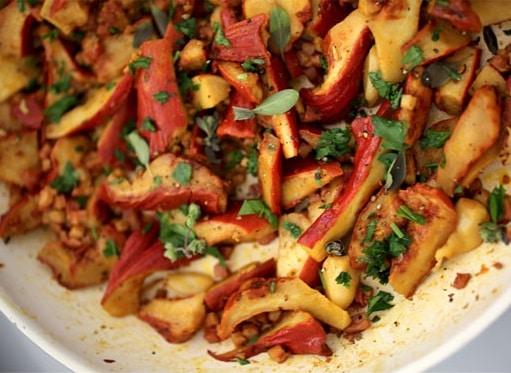
- Wash, dry and chop the mushrooms.
- Place the bacon over medium heat and cook for 5 minutes. Add mushrooms and garlic and cook for 8 minutes until the liquid evaporates.
- Sprinkle with salt and pepper at the end of cooking.
- Add parsley and oregano to the finished dish.
Salting
Too large "lobsters" are not suitable for pickling. Give preference to undamaged medium to small mushrooms. They are salted much faster.
While searching for mushrooms, experienced lovers of quiet hunting immediately notice and remove all kinds of forest debris in the form of adhered blades of grass and leaves. It is almost impossible to remove sand by hand, but it is easy to do with a toothbrush. Then they are dipped in a container with plenty of water.
It is advisable for lobsters to "take" a sour-salt bath for the next day. The proportions are calculated as follows: for one liter of water, take 2 g of citric acid and 10 g of rock salt. Finally, you need to thoroughly rinse the contents of the container.
It is recommended to fill in enamel buckets, glass jars and barrels. Clay and zinc dishes will not work, as the salt will remain on the walls.
Per kilogram of mushrooms you will need: 125 ml of water, 2 tablespoons of salt (regular, without iodine), bay leaf, a head of garlic, dill umbrellas, vegetable oil (depending on the size of the container).
Step by step cooking
- Cut off the caps and pour boiling water over them.
- Peel the garlic, finely chop the cloves.
- Place 2 dill umbrellas on the bottom of the container, put half of the lobsters.
- Sprinkle 2 tablespoons of rock salt on top, half of the whole serving of garlic.
- Place these ingredients in the same order except for the rock salt and finish with 2 dill umbrellas.
- Cover with a disc slightly smaller than the diameter of the container.
- Press down with something heavy (a container with water or a special circle), leave for a day. After 24 hours, remove the disc, fill the contents with oil so that it completely covers the contents of the container.

